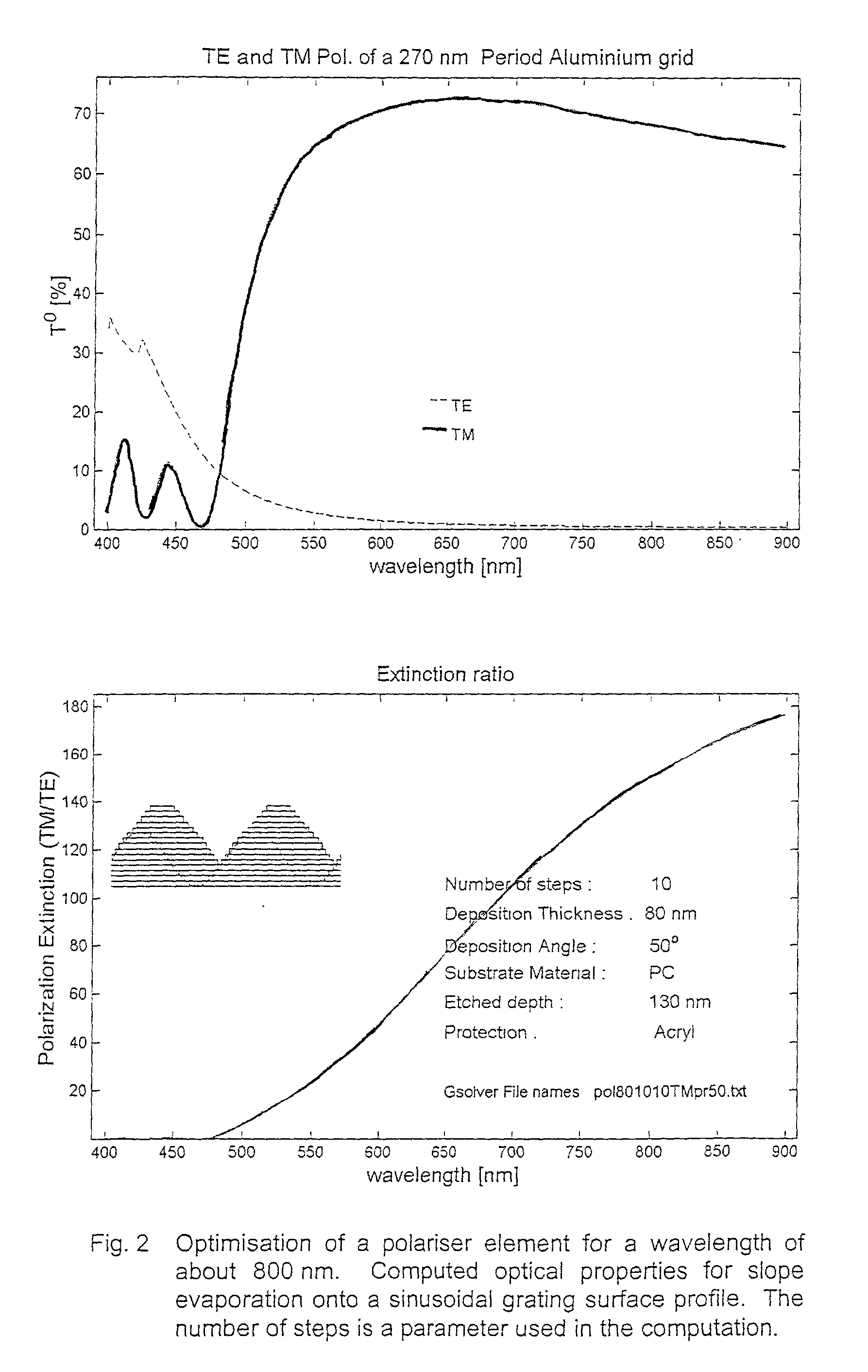Polarisers and mass-production method and apparatus for polarisers
a technology of polarisers and mass production methods, applied in the direction of optics, instruments, other domestic articles, etc., can solve the problems of wavelength range, transmission and temperature stability limitations,
- Summary
- Abstract
- Description
- Claims
- Application Information
AI Technical Summary
Benefits of technology
Problems solved by technology
Method used
Image
Examples
example 2
[0029] Effect of Optimisation of Grating Relief Profile:
[0030] FIG. 3 shows a polariser design using slope evaporation onto a sinusoidal grating profile. The computation is based on rigorous diffraction theory and takes into account the evaporated metal cross-section as evaporated onto the replicated grating profile, in this case sinusoidal, as well as the protective overcoat of an acrylic-based polymer. A maximum transmission TM of about 65% and an extinction ration TM / TE of about 340 over the wavelength range shown is achieved for an optimised metal thickness for this profile.
[0031] FIG. 4 shows the result of optimising the replicated grating relief profile. The deposited metal cross-section is changed, resulting in a maximum transmission TM of about 76% and an extinction ration TM / TE in excess of 480, a significant improvement in the polariser performance.
[0032] A further improvement may be obtained by replacing the acrylic-based overcoat by an evaporated MgF.sub.2 (Magnesium Flu...
PUM
 Login to View More
Login to View More Abstract
Description
Claims
Application Information
 Login to View More
Login to View More - R&D
- Intellectual Property
- Life Sciences
- Materials
- Tech Scout
- Unparalleled Data Quality
- Higher Quality Content
- 60% Fewer Hallucinations
Browse by: Latest US Patents, China's latest patents, Technical Efficacy Thesaurus, Application Domain, Technology Topic, Popular Technical Reports.
© 2025 PatSnap. All rights reserved.Legal|Privacy policy|Modern Slavery Act Transparency Statement|Sitemap|About US| Contact US: help@patsnap.com



